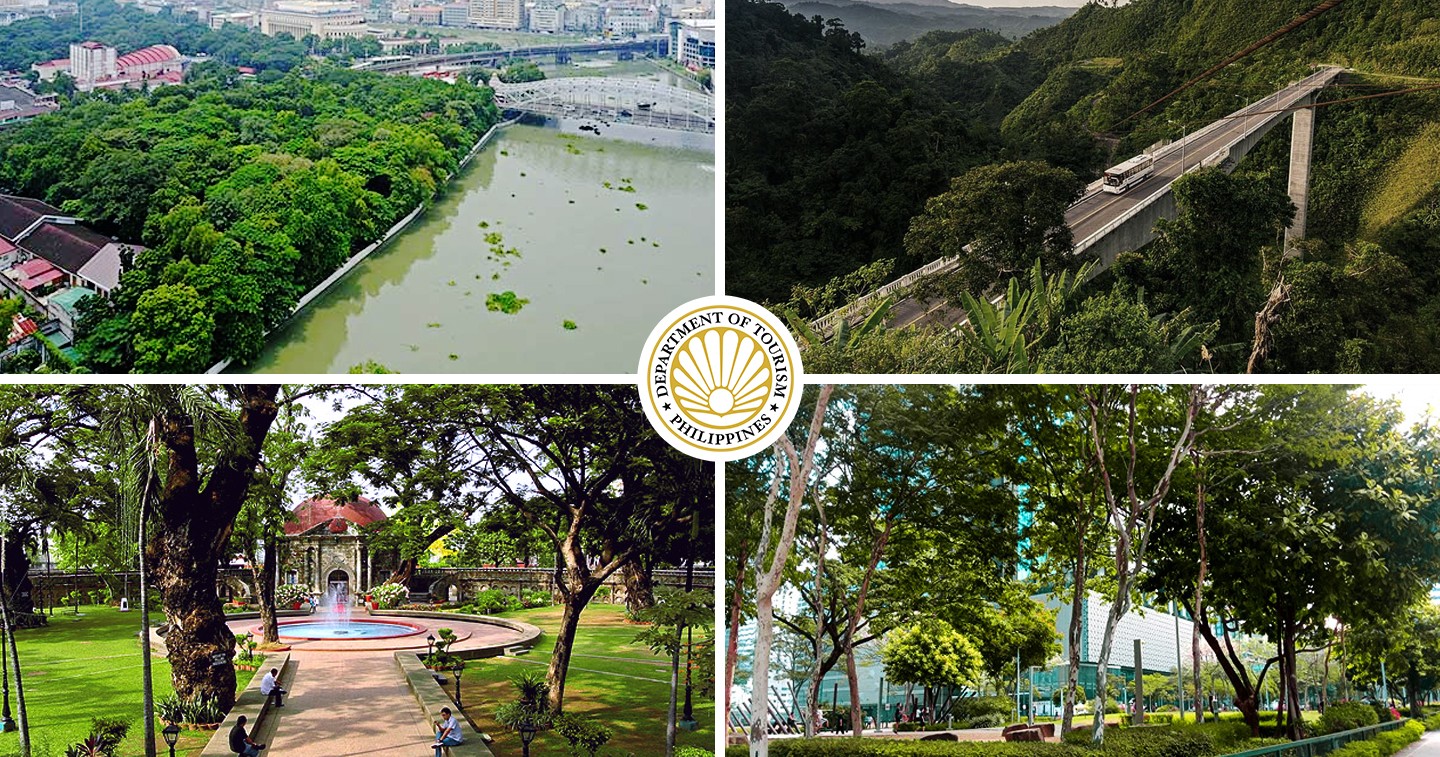SAN PABLO, LAGUNA – The development of green corridors play an important role in maintaining regional biodiversity, improving environmental quality, offering economic resilience opportunities, protecting heritage and culture, and supporting the jumpstart of the economy to restart tourism activities in the new normal.
Department of Tourism (DOT) Secretary Bernadette Romulo-Puyat on Tuesday (February 2) expressed her support for the development of the GREEN Corridor Initiative (GCI) during her two-day visit to Laguna to assess the province’s readiness to reopen for tourism. GCI is the flagship domestic program of the DOT Region 4A, set to be launched in April to spur its tourism recovery and response.
“The creation of travel corridors has been a key component in the resumption of tourism in some of the country’s destinations. We are confident that the same principle can be applied in Laguna,” Puyat said.
The tourism chief spearheaded the validation of the Dona Leonila Park at Sampaloc Lake and Casa San Pablo, which are under the proposed Laguna tourism circuit of the GCI along with Tayak Nature, Adventure and Wildlife (TANAW) Park in Rizal, Nagcarlan Underground Cemetery, and the slippers or tsinelas making demonstration in Liliw.
“Laguna is blessed to have many open-air, nature and culture-based tourism products that Filipinos would like to experience when traveling amidst the pandemic. And best of all, Laguna can be accessed quickly and conveniently from Metro Manila through land travel, which is the most ideal way for Filipinos to travel in the current situation. There is great potential for the tourism sector in this province to rebound and recover,” she added.

Puyat disclosed that while the operational guidelines for the GCI are still being ironed out, the identified tourism products will be based on their readiness and quality, guided by the development standards espoused in the National Tourism Development Plan (NTDP) 2016–2022 and the Tourism Rapid Assessment (TRA).
A bottom-up or participatory approach will also be used in identifying the areas of development in the project. These include the production of QR-coded GREEN Card for pre-registration procedures and cashless transactions in tourism establishments. A portion of the fees incurred in the purchase of the GREEN Card will be allotted to the provision of health insurance with COVID-19 emergency medical response services.
“The technology will be able to assess the carrying capacity of identified tourism sites and attractions. In effect, domestic tourists will easily be informed about tourist flows using this digital platform, which will alert them whenever the chosen tourism site is already available to accept tourists,” she said.
Meanwhile, participating LGUs of Laguna have already enacted a resolution of support to and participation in the project, including a joint resolution of the clustered LGUs to endorse the GCI through the Sangguniang Panglungsod. The LGUs also need to establish the Green Corridor Task Force (CGTF) to oversee the operations and management of the travel clusters. The GCTF will be composed of the Provincial, Municipal and City Tourism Officers of the clustered destinations, under the guidance of the DOT Region 4A.
“I look forward to your full support and commitment to help all of our initiatives succeed. Without your help, the realization of the Green Corridor Initiative, further tourism product development and enhancement, and our online marketing campaigns on the new normal and safe travel, to name a few, will not be possible,” Puyat enthused.
Laguna is the second highest contributor of the 2020 Same Day Tourism Arrivals sharing 11 percent of the total number of the region’s total tourism arrivals, gathering a total number of 1,267,762 same-day tourism arrivals. The province is also the second-highest contributor of the 2020 Overnight Tourism Arrivals sharing 22 percent of the total number of the region’s total tourism arrivals, gathering a total number of 207,559 overnight tourism arrivals.










